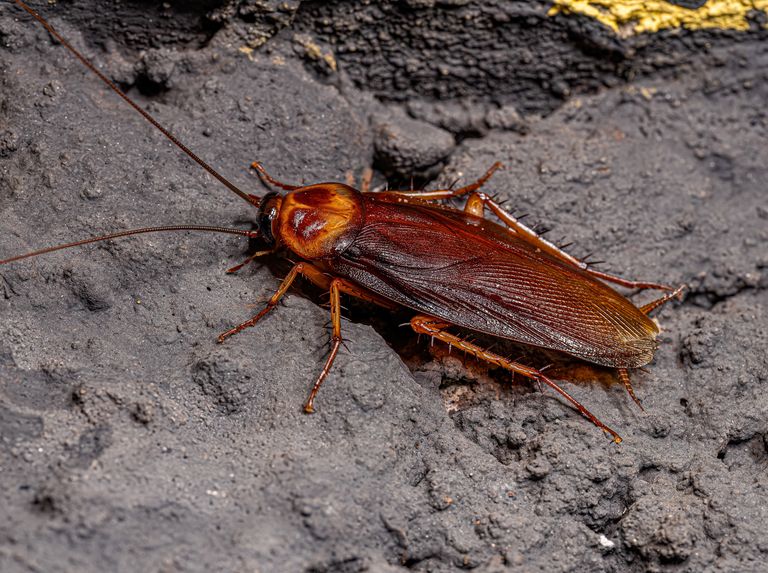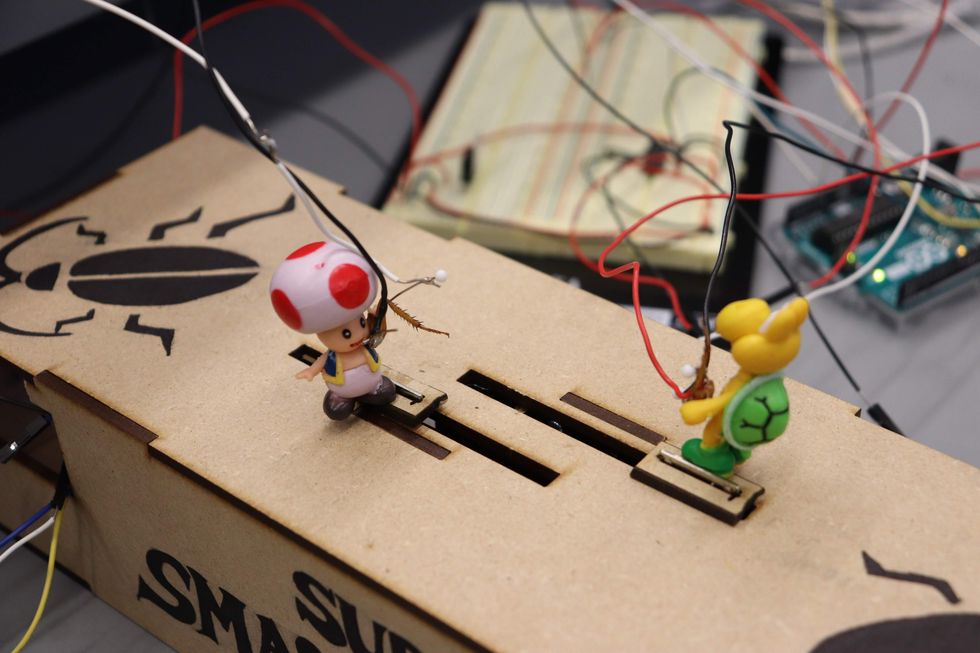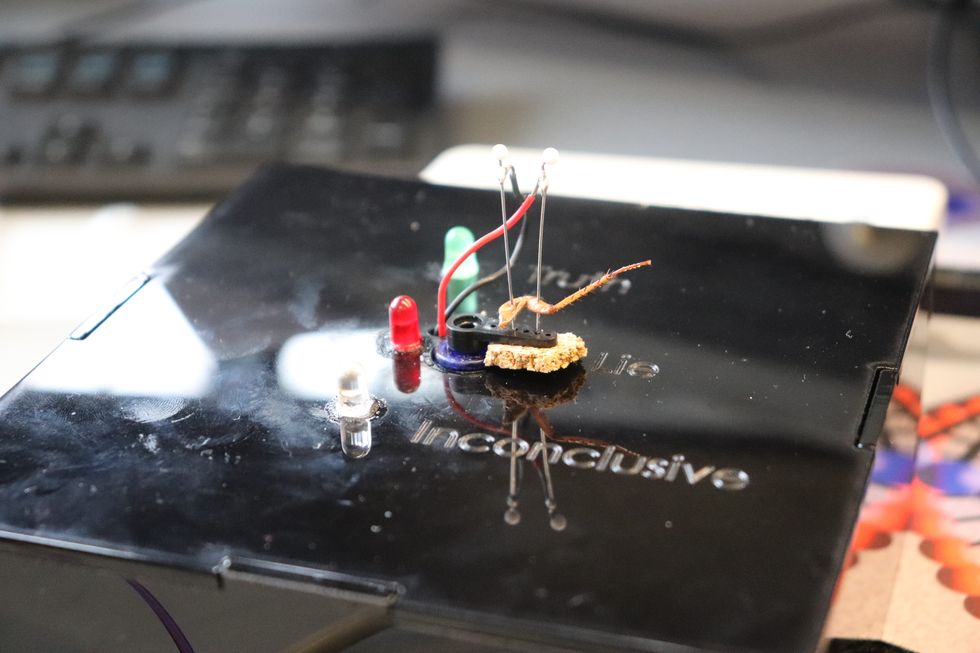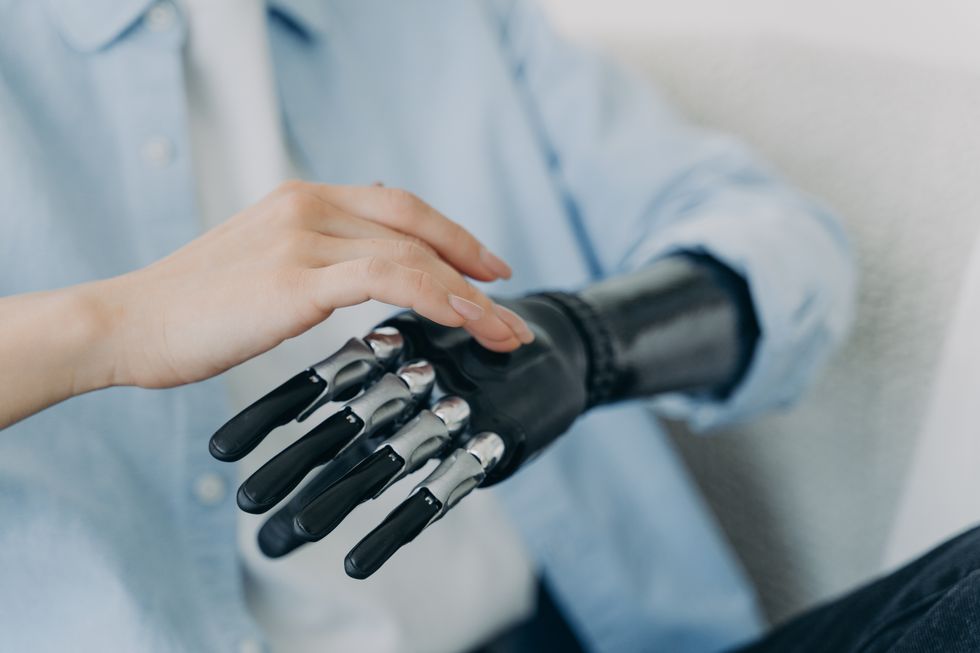It’s a gray December day, but inside the University of Pennsylvania’s undergraduate bioengineering laboratory, the energy is high. The smell of pizza is in the air, and students cluster around their workstations, bent intently over computer screens. One student flexes his bicep, stickered with an electrode, while another hurries past carrying a clear plastic terrarium that holds a single live cockroach. The sound of disco music plays intermittently.
It’s demo day in the Stephenson Foundation Bioengineering Educational Laboratory & Bio-MakerSpace.
The “cockroach lab,” as this course is known colloquially, has been a rite of passage for Penn bioengineering students for a decade, and it’s as academically unique as it sounds. “We’re teaching the concept of the inexactness of biology coupled with the precision of engineering, says David Meaney, Ph.D., the professor who co-created and oversees the lab, and senior associate dean in the School of Engineering and Applied Science. “We wanted to give students an awareness of how difficult living systems can be,” he tells Popular Mechanics.
Prosthetics in Miniature
This is a vital concept for bioengineering majors, many of whom will go on to work with human prosthetics—and that awareness unfolds in three modules. The first focuses on severing the leg from a live roach (although the bugs don’t feel pain, the class follows the same ethical protocols they would for any other living creature when performing the “amputation.”) Then, they learn to control the leg via electrical signals, using metal pins as electrodes.
This can be the most eye-opening—and frustrating—part of the class for many students because, unlike built systems, each roach leg is unique, requiring its own specific signal band to extend or retract. You can’t just use one input and get the same results; thus, reproducibility is difficult.
In the second module, students connect a roach leg to a motor, essentially creating a biomechatronic prosthesis, which for humans provides machine-aided motor control of muscle, skeleton, and nerves. This prosthesis has two different degrees of motion, one generated by the motor and one by the leg itself. This meshing of a living body part and mechanical components is incredibly complex, but students are further tasked to attach the cockroach leg to a motor, manipulating the leg to spell out the letters B and E in the air. Doing so requires the kind of precise control a surgeon might need.
In the final module, the students have to integrate everything they’ve learned by using some kind of stimuli from their own bodies—a bicep flex, for instance—to cause a roach leg to move. If it’s not immediately apparent, this human-cockroach machine interface, or HCMI, is a rudimentary form of how bionic limbs work. Human muscles (as well as cockroach ones) contract in response to electric signals from nerves. It’s possible to make those muscles contract using artificially produced electric signals, say from electrodes attached to a limb, or by amplifying the existing signals from other body parts. Students learn on cockroaches because they are a comparatively simple system (not to mention far more accessible than human limbs). And that’s what they’re demonstrating today.
Getting Creative
So where do the disco balls come in? In recent years, the program has granted students more flexibility in how they carry out their final projects. That wasn’t the case when Michael G. Patterson, now lab director, took the class as a junior in 2016. “Students were just given a goal and told they had to meet a certain target,” he tells Popular Mechanics. “What we discovered was, that makes all the designs look the same.” Relaxing those requirements not only opened the door for creativity, it also led students to become more invested in and passionate about their projects.
To be fair, it would have been tough for anyone to envision roach leg Rockettes kicking to the strains of Mariah Carey’s “All I Want for Christmas.” This year’s demos include the Cockroach Olympics, a discotheque, and a claw machine dubbed the Creepy Clawer, which features—as do several other projects—photos of Meaney’s and Patterson’s faces.
The award for the group who went all-in goes to a foursome who created a miniature Taylor Swift on a tiny stage. The pop singer’s left leg has been replaced with a roach leg, and she will rotate through three differently choreographed songs depending on the strength of the muscle flex signal and mic input. The team members who created her are dressed in black suits with sunglasses and proclaim themselves her bodyguards for what they’ve dubbed the “Eroach Tour.”
This level of personal investment is not unique. It embodies the spirit of the sign hanging on the wall of the lab, which reads “Learn. Design. Invent.” (Many graduating seniors do, in fact, go on to found companies based on their senior projects.) It will also surely prove useful for those who choose to pursue work with human prosthetics, a field driven by some of the most creative and passionate minds around.
Cyborg Limbs With a Sense of Touch
Hugh Herr, Ph.D., co-founder of MIT’s Center for Bionics, is one of them. The first prostheses he designed were his own, after doctors told him he’d never rock climb again following a double amputation below the knees. Today, he researches ways to make replacement limbs more cyborg-like and integrated with their human hosts. His ultimate goal is what he calls embodiment, where “the electromechanics are so married to human physiology you can’t remove them.” This means a prosthetic limb would no longer be a tool you can take off, like a pair of glasses, but another part of your body that responds without you having to even think about it, more like a pacemaker. “In the future,” Herr tells Popular Mechanics, “when a person has cancer, we will be able to fully rebuild their body.”
That may sound like a lofty goal, but we’re rapidly getting closer to realizing it. When it comes to getting human physiology and mechanical parts to play nicely together, there are three main interfaces, Herr says:
- The mechanical, or how seamlessly the external limb attaches to biological components while remaining effective;
- The neural, or how to connect the prosthetic part to the brain and both give and receive feedback from it; and
- Cutaneous feedback, which largely focuses on proprioception, or the sense of knowing where in space a limb is.
Right now, most commercial prosthetics are controlled by electric signals transmitted via sensors to the muscles and nerves adjacent to the amputation site. While capable of somewhat sophisticated movements, these devices often lack a lot in terms of control and natural sensation, e.g., being able to feel that your foot is on level ground.
At the University of Michigan, engineers have experimented with muscle tissue grafts called RPNIs that allow neural impulses to control prosthetics. The engineers had test subjects perform tasks that require fine motor skills to use them, including turning a key in a lock and operating a zipper. In general though, this area is not at an ideal point yet, Herr says. In the best scenario, we’d want a person to be able to use their thoughts alone to directly control synthetic motors of the limb, and also to receive feedback from that limb—things like temperature and hardness.
There has been some progress in this area, although it’s not widely commercially available. Researchers at Case Western University, for instanace, have experimented with using pressure sensors attached to artificial limbs and rewiring nerves to create the sensation of touch.
A Natural Feel For Your Artificial Limb
A more recent area of focus has been proprioception, the word for how we sense the position, speed, and torque of our limbs, even when our eyes are shut. It’s how you catch something someone throws at you, or know exactly how much force to use to lift a heavy object, and it’s usually involuntary.
Proprioception plays an important role in the precise control of body movements, and re-creating it in artificial limbs has proven tricky. Herr has pioneered a surgical technique called an agonist-antagonist myoneural interface, or AMI, that preserves this sensation in artificial limbs. Globally, only around 50 people have had this kind of amputation, including one at Brigham and Women’s Faulkner Hospital who went on to receive a bionic replacement for his lower left leg at MIT. In fMRI studies, no difference in proprioceptive activity was detected between people who had an AMI amputation and those who had never had a limb amputated.
“In the future, on the order of five years or so, we’ll be so good at this, we’ll completely restore the signals from the prosthetic to the brain and from the brain to the prosthetic, like the limb was never amputated,” Herr says.
Amputation Could Be Just the First Step to a Better, Bionic Limb
Part of what allows AMI amputations to be so effective is the fact that, even with traditional amputation, the neural wiring that corresponds to that limb remains intact, sometimes for years or decades. That’s what’s behind the phantom pain many amputees report, but also what allows AMI amputations to adapt to prosthetics so well. “What humans are good at is, we’re very adaptive,” Herr says. “So given just a small amount of information, the brain can really exploit that information.”
The AMI technique is one of the first innovations in amputation since the Middle Ages. “Amputation is one of the most ancient surgeries,” Herr says, but it has traditionally been seen as a surgery of last resort. If you have to cut off a limb, you’ve failed. Herr is trying to change that narrative, especially since the outcomes of an AMI amputation can be superior to other outcomes in some cases. Instead of thinking of an amputation as a failure, he says, we should consider bionics as one more tool in the toolkit. There are plenty of things a bionic arm can do that a regular human arm cannot, after all.
This kind of shift is necessary as the field of bionics continues to advance. There are around 2 million limb amputees living in the United States alone, and an estimated 185,000 amputations are performed each year, so the need for the technology, and for it to be as accessible as possible, is increasing all the time. “Fundamentally it’s solving the problem of, how do you get synthetic materials to behave well with biological materials,” Herr says.
Which brings us back to the University of Pennsylvania, where one of the possible future leaders in the world of prosthetics shakes a cockroach into a small cooler of shaved ice, pops the lid on, and sets a timer on her Apple Watch. She has determined that two minutes is the magic number for numbing the roach without affecting the mobility of the leg. She’s so efficient and matter-of-fact about it, but soon reveals why: This is her third roach of the day. (Mistakes were made.)
💡 Check This Out: The Top 10 Science Moments Coming in 2024
The lab has garnered attention from other bioengineering departments across the country, and Meaney and Patterson have done demos of their own at educational conferences. Giving students a first-hand, real-world experience of how prosthetics work may inspire research along so many pathways. Patterson envisions a future where, instead of full amputations, only malfunctioning parts are swapped out—for instance, if you had a tumor in your forearm, you would still be able to retain your hand. Meaney also mentions research about how stimulating certain areas of the brain in the way they’re doing at Penn shows promise for treating obesity and depression.
Time is up. The roach is retrieved from its ice bath, has its leg snipped, and is dumped back into its habitat. The leg is attached to a sensor under a spinning disco ball of multicolored LED lights, and the music starts.
Isn’t progress beautiful?


















